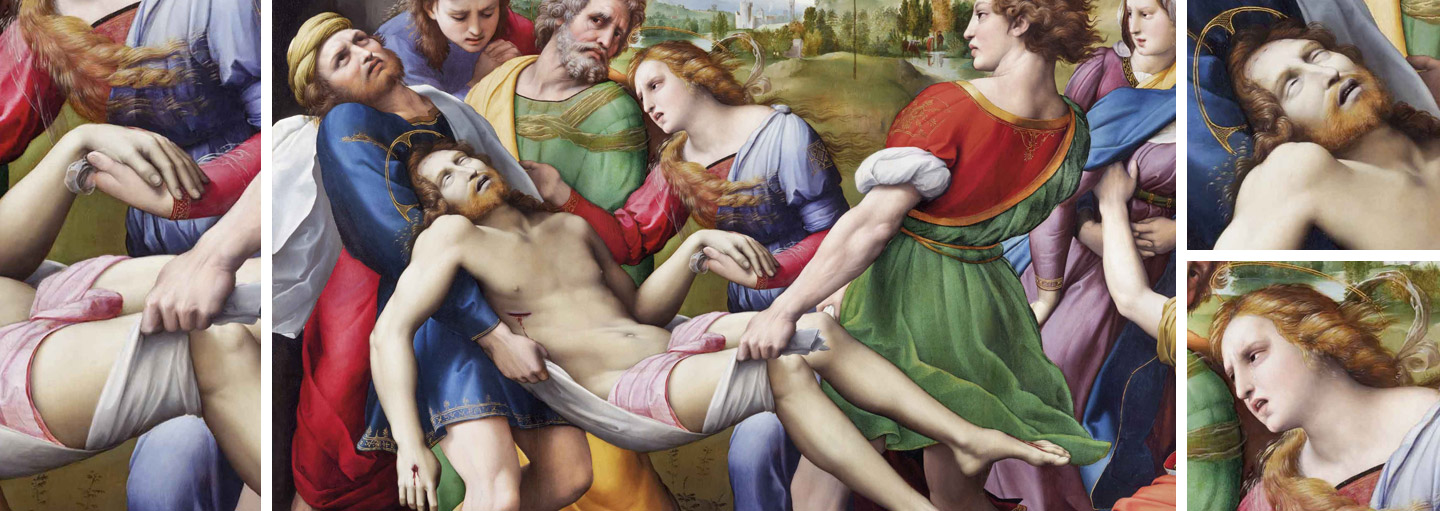With the ascension to the papal throne of Paul V Borghese (1605-1621), his cardinal nephew, Scipione Caffarelli Borghese (1577-1633), began to intensely commission architecture and at the same time to acquire works of art that would make his collection one of the largest of his time.
By confiscating the paintings in Cavalier d'Arpino's studio, in 1607 he gained possession of about 100 works, including several youthful ones by Caravaggio. In the same year, he acquired the patriarch of Aquileia's collection, while in 1608 he obtained 71 extraordinary paintings belonging to Cardinal Sfondrato, which presumably included Titian's Sacred and Profane Love, as well as the Portrait of Julius II (London, National Gallery) and the Madonna of Loreto (Chantilly, Musée Condé) by Raphael.
The cardinal nephew's extreme unscrupulousness in obtaining works of art and in indulging his passion as a modern collector is shown in numerous episodes, such as his acquisition in 1605 of Caravaggio's Madonna and Child with St. Anne, which had been rejected by the Confraternity shortly before it was to be displayed in the chapel in St. Peter's - perhaps as ordered by the pope himself - and the incredible theft of Raphael's Deposition, which was removed on behalf of Scipione from the convent of San Francesco a Prato in Perugia, lowered from the town walls during the night between March 18 and 19, 1608, and subsequently declared "the cardinal's private property" by Paul V.
There were other works by Raphael in the Borghese collection, as proof of its indisputable excellence - the Three Graces (Chantilly, Musée Condé), the Vision of a Knight, and St. Catherine of Alexandria (London, National Gallery), which the family sold during the years of the French Revolution.
The collection of ancient sculptures - the other fundamental element able to confer an aura of ideal universality on collections of art - had been constantly expanding. First there was the acquisition in 1607 of the Della Porta and Ceuli collections; then, thanks to extraordinary occasional finds, came the additions of the famous Gladiator, now in the Louvre, which was found near Anzio, and the Hermaphrodite, which was discovered during excavations in the vicinity of the church of Santa Maria della Vittoria.
The splendor of the archaeological marbles was complemented by the "modern" statuary, which was in constant competition with the classical models. From 1615 to 1623 the young Gian Lorenzo Bernini executed for the cardinal the famous sculptural groups still housed in the Museum: the Goat Amalthea, Aeneas and Anchises, Rape of Proserpine, David, and Apollo and Daphne.
In the absence of a precise inventory, a quite reliable picture of Scipione Borghese's art collection is provided by the description of the Villa on the Pincio published in 1650 by Giacomo Manilli, which also describes the Villa's exterior and gardens. In accordance with the cardinal's will, at his death all his movable property and real estate were subjected to a very stringent fideicommissium, a legal institution that kept the collection together until the end of the eighteenth century.
At the end of the seventeenth century, the Borghese family could count on a collection of about 800 paintings and one of the most famous collections of antiquities in Rome, in addition to vast holdings of real estate. It was precisely the archaeological collection that aroused the interest of Napoleon Bonaparte, whose sister Pauline (1780-1825) had married Prince Camillo Borghese (1775-1832). Following their sale, which was forcibly imposed by the emperor, in 1807-8 the sculptures were removed from their original setting and transported to the Louvre Museum, where they now constitute one of the essential components of the archaeological collection.
In the following years, through replacements made by recovering statues and new excavations promoted by the prince's agent, Evasio Gozzani di San Giorgio, the Villa on the Pincio acquired the appearance that we can admire today. We owe to Camillo two of the Villa's most famous masterpieces: the sculpture of Paolina Bonaparte as Venus Victrix by Antonio Canova and Correggio's Danae, which he purchased in 1827. In 1833 the prince renewed the fideicommissum, thus preserving the collection in its entirety until the Italian government acquired the Museum and the Gallery in 1902.




